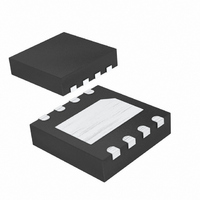MAX1554ETA+T Maxim Integrated Products, MAX1554ETA+T Datasheet - Page 8

MAX1554ETA+T
Manufacturer Part Number
MAX1554ETA+T
Description
IC LED DRIVR WHITE BCKLGT 8-TDFN
Manufacturer
Maxim Integrated Products
Type
Backlight, White LEDr
Specifications of MAX1554ETA+T
Constant Current
Yes
Topology
PWM, Step-Up (Boost)
Number Of Outputs
1
Internal Driver
Yes
Type - Primary
Backlight
Type - Secondary
White LED
Voltage - Supply
3.15 V ~ 5.5 V
Voltage - Output
40V
Mounting Type
Surface Mount
Package / Case
8-TDFN Exposed Pad
Operating Temperature
-40°C ~ 85°C
Current - Output / Channel
970mA
Internal Switch(s)
Yes
Number Of Segments
10
Operating Supply Voltage
3.15 V to 5.5 V
Maximum Power Dissipation
1951 mW
Maximum Operating Temperature
+ 85 C
Mounting Style
SMD/SMT
Minimum Operating Temperature
- 40 C
Lead Free Status / RoHS Status
Lead free / RoHS Compliant
Frequency
-
Efficiency
-
Lead Free Status / Rohs Status
Details
High-Efficiency, 40V Step-Up
Converters for 2 to 10 White LEDs
Adjusting the output current changes the brightness of
the LEDs. The LED current is set by the voltage at BRT
(V
range for adjusting output current is 0 to 1.25V. Over
this range, the LED current is found from the following
equation:
BRT can be overdriven; however, applying a V
greater than 1.72V does not increase the output current
above the level at 1.72V. See the LED Current vs. BRT
Voltage graph in the Typical Operating Characteristics
section. To set the maximum LED current, calculate R1
when V
where V
value greater than 1.72V, such as V
V
age. Power dissipation in R1 is typically less than 5mW;
therefore, power dissipation in a standard chip resistor
is not a concern.
The BRT input is also used as a digital input allowing
LED brightness control with a logic-level PWM signal
applied directly to BRT. The frequency range is from
100Hz to 10kHz, and the duty cycle range is 0 to 100%.
A 0% duty cycle corresponds to the minimum current,
and a 100% duty cycle corresponds to full current. See
the LED Current vs. BRT Duty Cycle graph in the
Typical Operating Characteristics section. The BRT
resistor and SS capacitor form a lowpass filter, so PWM
dimming results in DC current to the LEDs without the
need for additional RC filters.
A 0.47µF ceramic output capacitor (C2) is recommend-
ed for most applications. For circuits driving six or
fewer LEDs, use a 4.7µF ceramic input capacitor (C1).
For circuits driving more than six LEDs, use a 10µF
input capacitor (C1). For best stability over a wide tem-
perature range, use capacitors with an X5R, X7R, or
better dielectric.
8
BRT(MAX)
BRT
_______________________________________________________________________________________
) and the sense resistor (R1) at FB. The V
BRT
BRT(MAX)
is the maximum applied BRT control volt-
is at its maximum, as follows:
R
I
1
LED
is 1.72V if BRT is connected to any
=
Adjusting the LED Current
V
6 67
=
BRT MAX
.
V
6 67
BRT
PWM Dimming Control
(
.
x I
Capacitor Selection
LED MAX
+
x R
)
0 17
+
.
(
1
0 17
.
)
CC
. Otherwise,
BRT
BRT
The MAX1553 has a 480mA inductor current limit and
can drive up to six LEDs at 20mA or nine LEDs at
15mA. Inductor values from 4.7µH to 47µH work satis-
factorily. Larger values provide the best efficiency while
small inductor values allow the smallest inductor size. A
good choice for best efficiency is the TOKO D62 or
D62L series at 47µH. For smallest size, the Murata
LQH32C at 4.7µH works well.
The MAX1554 has a 970mA inductor current limit and
can drive up to 10 LEDs at 20mA. Inductor values from
4.7µH to 22µH work satisfactorily. A good choice for
high efficiency and small size when driving 9 or 10
LEDs is the TOKO D62 series at 22µH.
When large inductor values are used to optimize effi-
ciency, the MAX1553/MAX1554 operate with continuous
inductor current. With large inductor values (typically
greater than 10µH), stability, input, and output ripple
are improved by connecting a capacitor in parallel with
the LEDs (C4 in Figures 1, 2, and 3).
To prevent saturation, use an inductor with a current
rating that matches the device’s LX current limit.
However, if size is particularly important, it is some-
times acceptable to operate the inductor 10% into satu-
ration. For best efficiency, the inductor’s DC resistance
should also be as low as possible.
The MAX1553/MAX1554s’ high switching frequency
demands a high-speed rectification diode (D1) for opti-
mum efficiency. A Schottky diode is recommended due
to its fast recovery time and low forward-voltage drop.
Figure 3. Circuit with the MAX1554 Driving 10 White LEDs
DC CONTROL
3.15V TO 5.5V
PWM
INPUT
OR
10µF
C1
OFF
0.1µF
ON
C3
V
SS
EN
BRT
A915BY-220M
CC
MAX1554
22µH
L1
GND
OV
LX
FB
CMDSH1-60M
0.47µF
50V
D1
C2
Inductor Selection
R1
10Ω
Diode Selection
R2
330kΩ
R3
10kΩ
C4
3300pF
D2–D11
WHITE
LEDs












